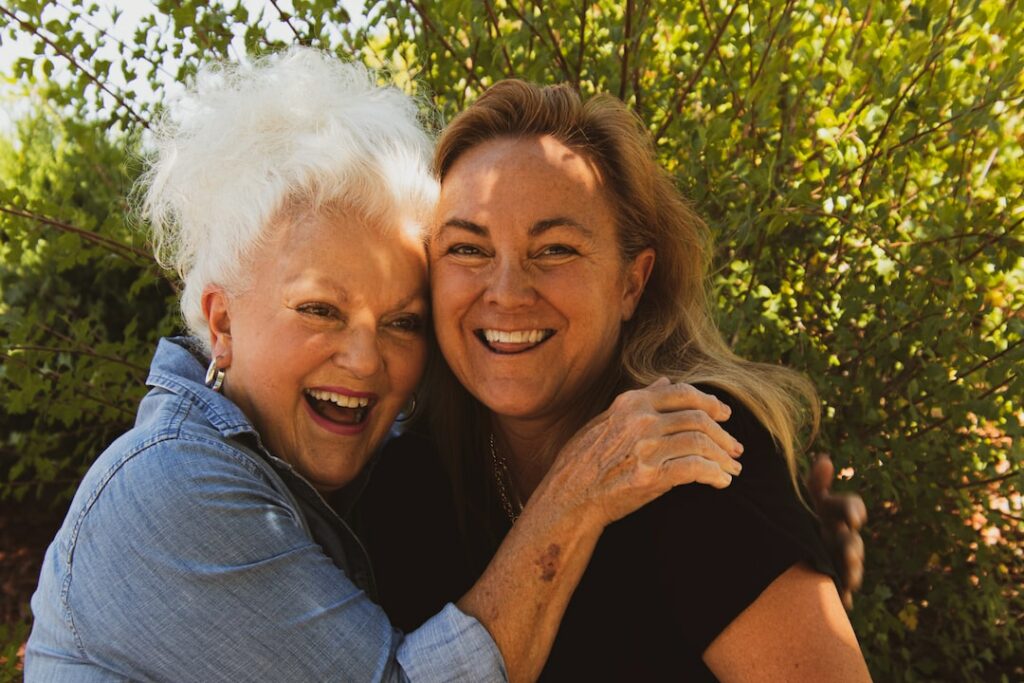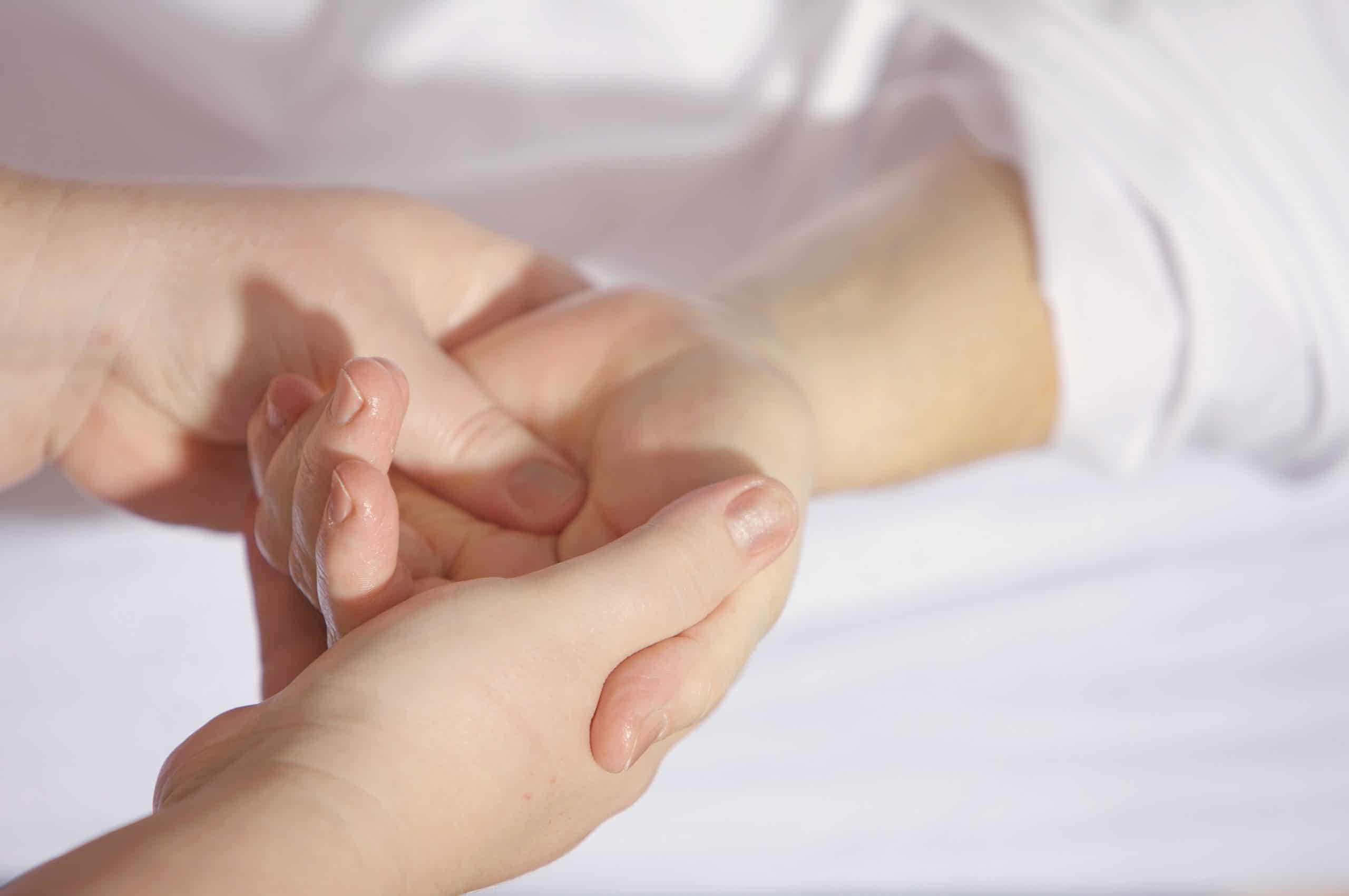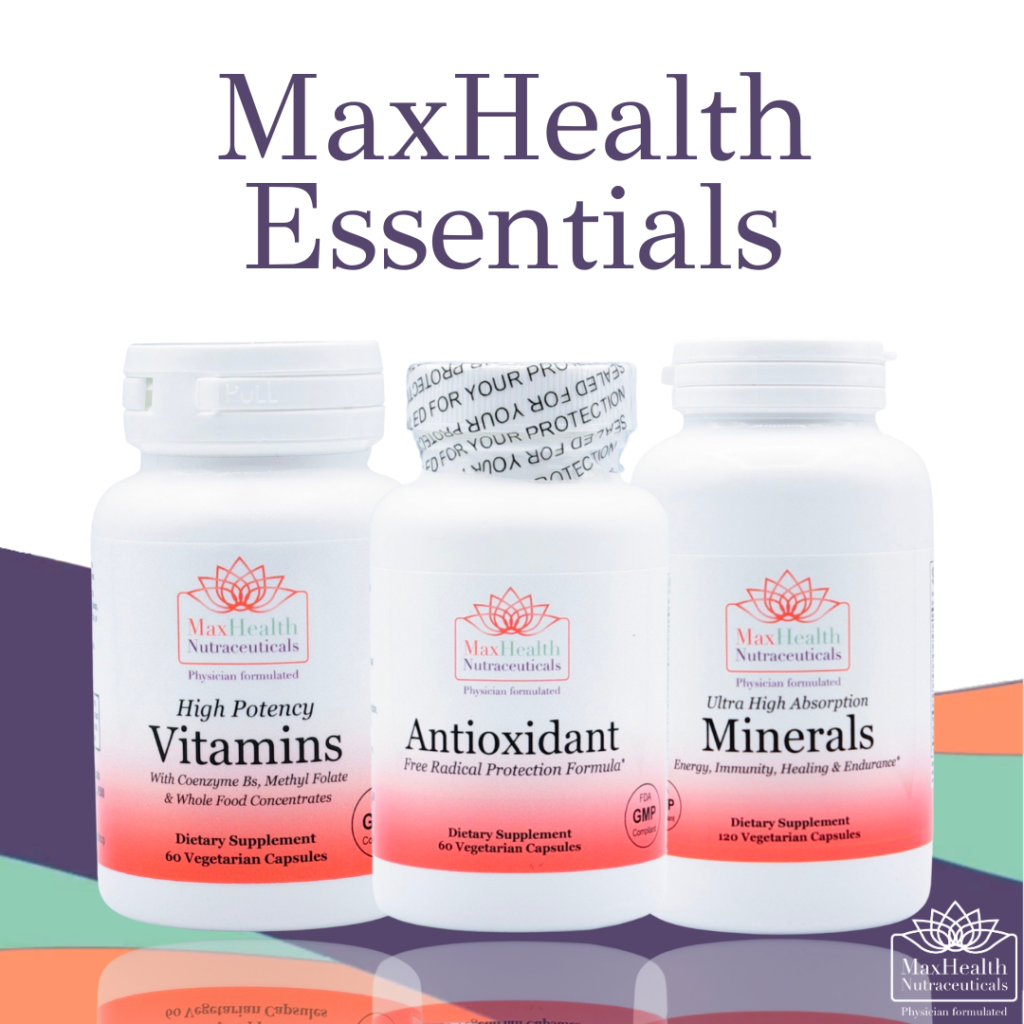

In a small village nestled in the hills, there once lived a wise and knowledgeable woman named Maria. The villagers respected her for her extensive knowledge of herbs and remedies, and many sought her advice when they felt unwell.
One day, a young woman named Ana came to Maria for guidance on bone health. Ana was anxious about her health as her mother had recently been diagnosed with osteoporosis.
“Maria, I’m concerned that I may also develop osteoporosis,” Ana said. “My mother has it, and I want to do everything I can to prevent it from happening to me.”
Maria listened to Ana’s concerns attentively and nodded in understanding. “There are three main factors that can lead to osteoporosis,” she explained. “Firstly, a lack of calcium and vitamin D in your diet. Secondly, insufficient exercise, particularly weight-bearing activities. And finally, hormonal changes, particularly in women after menopause.”
Ana was fascinated and asked for more information. “Please tell me more,” she said.
“You can increase your calcium and vitamin D intake by consuming foods such as milk, cheese, and leafy green vegetables,” Maria explained. “To get the weight-bearing exercise you need, you can try activities like walking, jogging, or dancing.”
“What about hormonal changes?” Ana asked.
“Unfortunately, we cannot control hormonal changes,” Maria replied. “But you can speak with your doctor about treatments that can help reduce your risk of osteoporosis.”
Ana expressed her gratitude to Maria for her invaluable advice and left with a newfound sense of knowledge about how to take care of her bone health.
With Maria’s guidance, Ana began to incorporate more calcium and vitamin D into her diet, initiated a regular exercise routine, and consulted her doctor regarding her risk of osteoporosis. Consequently, she was able to take control of her bone health and lead a healthy and prosperous life.
Continue reading below…

Introduction
Do you recognize the 3 main trouble spots for osteoporosis? As a busy professional, it’s crucial to be aware of this common yet often overlooked health issue. Osteoporosis is a widespread condition that can bring about numerous issues, such as fractures and chronic aches.
In this comprehensive blog post, we will delve into the essential aspects of osteoporosis – from understanding its definition, symptoms, and risk factors to identifying the three most vulnerable areas where bone loss typically occurs: wrist bones, spine bones, and hip bones.
Beyond recognizing these trouble spots for osteoporosis, our focus will also extend towards prevention and treatment strategies. We’ll explore diet tips, exercise recommendations, supplements that support bone health as well as alternative therapies that could aid in managing this condition effectively.
Lastly, we will discuss the functional medicine approach to addressing osteoporosis care by examining root causes of bone loss like nutritional deficiencies and hormonal imbalances. This holistic perspective allows us not only to understand but also tackle osteoporosis at its core.
So join us on this journey through “Do You Recognize the 3 Main Trouble Spots for Osteoporosis?” while learning how an integrative approach can help take control of your health by optimizing bone strength and reducing future risks associated with this prevalent disease.

Minimize Medications. Maximize Health.
Are you super busy but need to take control of your health? Are you tired of being tired? Subscribe to my “Minimize Medications, Maximize Health Blog” and I’ll give you 7 Tips to Get Healthy in No Time absolutely FREE.
You have Successfully Subscribed!
What is Osteoporosis?
Osteoporosis is a chronic condition characterized by low bone density and increased fragility of the bones. It affects millions of people, particularly those over the age of 50, and can lead to fractures in even minor falls or bumps. In order to prevent this serious health issue, it’s important to understand what osteoporosis is and how it develops.
Osteoporosis is a condition in which bones become weakened by decreased bone mass and mineral content, making them more fragile than usual. It develops slowly over time and often goes unnoticed until a fracture occurs. Bone density can be assessed by BMD (bone mineral density) exams, and this is a typical indication for osteoporosis testing. Other indicators of osteoporosis may involve long-term soreness in the joints or back, as well as an augmented danger for slips due to weakened muscles and ligaments near the impacted region.
Fragility of bones caused by a loss in bone mass or mineral content can result in easy breakage and protracted healing periods for fractures.
Signs of Osteoporosis
Signs of osteoporosis can include back pain, a stooped posture (dowager’s hump), height loss due to compression fractures in the spine and broken bones even after minor traumas like sneezing or coughing hard. Therefore, it is essential for individuals to recognize these signs in order to take appropriate measures towards managing this long-term illness.
Calcium Intake
Calcium intake can be inadequate in combination with aging and hormonal changes such as menopause, resulting in a higher risk of osteoporosis. Calcium helps build strong bones throughout life; however, when we age our bodies are less able to absorb calcium from food sources leading to weaker bones.
Hormones
Additionally, hormones like estrogen play an important role in maintaining healthy bones by helping regulate calcium levels in the body; when hormone levels decrease during menopause this process becomes disrupted leading to decreased BMDs and weakening of the skeletal structure over time.
Being aware of which regions are more vulnerable to osteoporosis can assist in safeguarding one’s bone health. Next, let’s look at the common trouble spots for osteoporosis in detail.
Identify the 3 Main Trouble Spots for Osteoporosis
Osteoporosis is a disorder that weakens and makes bones fragile. Millions of people aged 30 and above are particularly vulnerable to this weakening of the bones known as osteoporosis. Knowing which areas are most prone to developing osteoporosis can help you take steps to prevent it or slow its progression. Here are three main trouble spots for osteoporosis:
1) Spine:
The spine is one of the most common places affected by osteoporosis due to its weight-bearing structure and lack of movement in certain parts. Osteoporotic fractures of the spine occur when weakened vertebrae break down due to lack of support from healthy surrounding tissue and muscles. Vertebrae compression fractures, as well as an increased risk of kyphosis (hunchback), can result from osteoporosis in the spine. Symptoms may include back pain, loss of height, stooped posture, and difficulty standing straight up or bending down.
Caring for Your Spine
Vertebral compression fractures affect nearly 700,000 people every year, and they may not cause noticeable pain. These injuries are twice as prevalent as broken hips or wrists.
-
Be aware of warning signs. You can identify compression fractures by being observant. Symptoms include sudden height loss, breathing difficulties, a protruding stomach, and lower back pain.
-
Strengthen your abs. Toning your abdominal muscles can alleviate the strain on your back. Engage your abs during workouts and daily tasks like carrying groceries. Exercises that focus on strengthening core muscles around the spine – such as yoga poses like cat/cow stretches – may help provide additional support for spinal health while improving flexibility at the same time. Swimming and walking are low-impact exercises that can bolster strength, coordination, and balance to help avoid falls which may cause serious injuries in those with fragile bones due to osteoporosis. These activities can also provide a great opportunity for relaxation and enjoyment.
-
Be cautious when bending forward. If you already have osteoporosis, bending forward can increase the risk of spine and hip fractures. Your doctor may suggest using a pick-up cane so you can clean and retrieve items while standing upright.
2) Hips:
Osteoporotic hip fractures often occur when someone falls from a standing position or trips on something while walking. These fractures can be particularly dangerous because they usually require surgery and prolonged recovery time with physical therapy afterward. Symptoms may include intense pain at the site of fracture along with limited mobility in that area until healing occurs.
Caring for Your Hips
Fractured hips can result in long-term health problems and hinder independent living. Falling is the main cause of more than 95% of hip fractures, as per the CDC.
-
Improve your balance. There are several ways to enhance your balance and coordination. Enroll in Tai Chi or yoga classes. Take turns standing on one leg at a time. Keep your eyeglass prescription updated and use medications that don’t cause drowsiness.
-
Strengthen your legs. Strong legs can help you maintain stability. Train them with exercises like squats, lunges, and calf raises.
-
Make your home safe. Modify your home with safety measures in mind. Install grab bars in the bathroom and additional lights in the backyard. Ensure that each staircase has secure handrails on both sides.
3) Wrists:
Osteoporosis of the wrist can lead to fractures in the forearm or hand bones due to weakened bones in this area. Wrist fractures caused by weakened bones are also common among those with osteoporosis due to their frequent use during everyday activities like typing on a computer keyboard or using tools around the house. Signs may include swelling at the wrist along with tenderness and reduced range of motion when attempting any type of hand movements like gripping objects or writing/drawing motions with your hands/fingers.
Caring for Your Wrists
A fractured wrist can be an early indicator of osteoporosis, particularly if the injury occurred due to minor force.
-
Maintain a neutral position. Practice keeping your wrists straight rather than allowing them to bend backward when typing or lifting objects. This can help prevent carpal tunnel syndrome and other related injuries.
-
Twist a towel. In addition to dumbbell exercises, there are other ways to strengthen your wrists. Take a towel by each end and wring it tightly.
-
Squeeze a ball. Another option is to hold a ball in your palm and squeeze it with your fingers. To minimize joint stress, point your middle finger toward the center of your wrist.
- Wear a brace. Wearing a brace on your wrist while engaging in activities like gardening or weight lifting can help protect it from injury.
Acknowledging the three chief problem areas associated with osteoporosis can help you make proactive choices to reduce your risk and sustain strong bones. Grasping the mechanisms behind osteoporosis progression is a vital component of managing one’s wellbeing and averting bone deterioration.
Prevention and Treatment Strategies for Osteoporosis
A well-rounded diet plus regular exercise are necessary for keeping bones strong and healthy. Maintaining a nutritious diet abundant in calcium, vitamin D and other minerals can help reduce the risk of bone deterioration associated with osteoporosis. Exercise is also important for strengthening the bones and improving balance to reduce the risk of falls. In addition to dietary changes and exercise, there are several supplements that may be beneficial for those at risk of developing osteoporosis or who have already been diagnosed with it.
Nutritious Diet
Calcium, a mineral important for bone health, can be sourced from dairy products such as milk and cheese; green leafy vegetables like kale; almonds; sardines or salmon; tofu; dried figs or white beans; okra, broccoli rabe or navy beans. Vitamin D helps your body absorb calcium from food sources so it’s important to get enough of this nutrient too. Good sources include fatty fish like tuna or salmon, egg yolks, fortified milk or cereal products, mushrooms exposed to sunlight during growth process as well as exposure to natural sunlight (10-15 minutes per day). Including foods rich in magnesium, such as spinach, chard, pumpkin seeds, blackstrap molasses, mackerel and halibut to name a few – is essential for regulating calcium absorption.
Supplementation
Supplementation can further bolster bone health, including Strontium citrate which has been proven to improve bone density by up to 10% in a 3-year period. Vitamin K2 helps keep calcium in its proper place within the bones while Boron aids metabolism of vitamins and minerals involved with bone formation. Collagen hydrolysate is an excellent source of amino acids necessary for tissue repair and regeneration such as those affected by osteoporosis, whilst Silica/Silicon dioxide promotes production and upkeep of connective tissues surrounding joints that are usually weakened due to this condition.
Exercise
Exercise is another key component for strengthening our bones – weight bearing exercises like walking briskly , jogging, stair climbing, tennis, etc. stimulate new bone formation while helping maintain muscle strength, thereby reducing falls & injuries associated with them. Regular exercise also helps prevent conditions that increase fracture risks such as obesity, eating disorders & sedentary lifestyles; early menopause & certain medical conditions like overactive thyroid & adrenal glands. Additionally engaging in activities that promote balance like tai chi may further reduce fall risks.

Acupuncture
Alternative therapies such as acupuncture may also offer relief from symptoms related to osteoporosis without resorting to medications that could have unpleasant side effects. Acupuncture works by stimulating specific points on the body known as “acupoints” through insertion of thin needles into these areas, resulting in increased circulation throughout the entire body and helping improve overall health and wellbeing.
Yoga
Additionally, yoga poses specifically designed to strengthen core muscles can help build strength around the spine and protect against fractures caused due to weakened vertebrae, a common symptom associated with advanced stages of this disease.
Meditation
Finally, meditation and relaxation techniques have been proven effective in reducing stress levels which are often implicated in causing a decrease in bone density over time when left unchecked.
Taking proactive measures to avert osteoporosis can be done by adjusting dietary habits and lifestyle choices. Furthermore, understanding the root causes of osteoporosis is essential for developing an effective treatment plan with a functional medicine approach.
The Functional Medicine Approach to Osteoporosis Care
Millions of individuals suffer from osteoporosis, yet the fortunate news is that it can be managed through a combined approach. The functional medicine strategy for dealing with osteoporosis focuses on the root causes of bone diminishment and how to address them through nutrition, physical activity, supplementation, and different treatments.
Understanding the Root Causes of Osteoporosis
A comprehensive evaluation by a qualified practitioner is essential for understanding why bones are becoming weaker or more brittle over time. Age-related hormone fluctuations, inadequate nutrition, long-term inflammation, and inefficient nutrient absorption from food can all be potential sources of bone deterioration.
Gaining an understanding of how osteoporosis develops is a key factor in managing the condition with functional medicine. Age-related endocrine shifts, like decreased estrogen levels, smoking habits, alcohol intake, physical passivity, deficient nutrition (especially calcium), and particular drugs such as corticosteroids can all accelerate this condition. Consequently, it’s essential for those exploring functional medicine approaches for osteoporosis management to recognize these factors and make any necessary adjustments accordingly.
Identifying these root causes helps practitioners create individualized plans tailored to each patient’s unique needs in order to maximize their health outcomes.

Identifying Nutritional Deficiencies That Contribute To Bone Loss
Calcium and vitamin D are two important nutrients for maintaining strong bones. Minerals like magnesium may be involved in sustaining bone health. Practitioners may recommend specific tests such as bloodwork or hair analysis in order to determine if any nutrient deficiencies are present which could be contributing factors for developing osteoporosis or making existing conditions worse over time.
-
Consume foods rich in calcium. Calcium and Vitamin D are essential nutrients for your bones. Include dairy products and fortified breakfast cereals in your diet.
-
Incorporate foods high in magnesium. Magnesium is also vital for healthy bones. Individuals with higher magnesium intake have a higher bone mineral density, which is crucial in reducing the risk of bone fractures and osteoporosis. Consuming more magnesium through foods or supplements may aid in improving bone mineral density in older women.
The Functional Medicine approach to osteoporosis care is an effective way to take control of your health and minimize the use of medications. An integrative methodology can be employed to create a tailored program for best bone health that looks at both nutritive inadequacies and hormonal discrepancies.
Take Control of Your Health with an Integrative Approach to Osteoporosis Care
Integrative medicine is a comprehensive approach to health care that combines traditional medical treatments with evidence-based complementary therapies. For those enduring from osteoporosis, a unifying strategy may be particularly useful in assisting to decrease pain and enhance bone health. By combining lifestyle changes, dietary modifications, and evidence-based alternative therapies such as acupuncture and massage therapy, individuals can gain an empowered sense of self-care.
The benefits of integrative medicine for bone health are numerous. Integrative medicine has the potential to bolster bone health by supplying necessary nutrients for development and progress, while also decreasing inflammation in the body that can harm bones eventually. Additionally, integrative approaches often include mind-body techniques such as yoga or tai chi which have been shown to improve balance and coordination while increasing overall strength – all important factors when managing osteoporosis symptoms.
It is essential to source a competent specialist in integrative medicine when searching for successful treatments for osteoporosis management. To be successful in treating osteoporosis, your doctor should have extensive experience with this condition and a deep understanding of alternative treatments that could benefit you specifically, such as acupuncture or herbal remedies for increased bone density or pain relief. Moreover, they should also possess an intimate knowledge of alternative therapies that may prove beneficial based on your individual needs; such as acupuncture or herbal remedies tailored towards improving bone density levels or relieving pain associated with weakened bones.
A Case Study EXAMPLE on Functional Medicine Approach to Osteoporosis
Patient Profile:
Mary, a 65-year-old woman, came to our functional medicine clinic seeking an alternative solution for her osteoporosis. She was diagnosed with the condition three years prior and was worried about the possible side effects of prescription drugs. Mary was looking for a more comprehensive approach that would target the underlying causes of her osteoporosis.
Assessment:
During Mary’s initial consultation, we conducted a thorough evaluation of her health history, dietary habits, lifestyle, and stress levels. Furthermore, we requested several lab tests to measure her nutrient levels, hormone balance, and bone health.
Functional Medicine Therapy:
Our team created a personalized treatment plan for Mary based on our assessment, which focused on treating the root causes of her osteoporosis. The plan included the following:
Nutrient-Dense Diet: Mary was advised to eliminate inflammatory foods from her diet and focus on a nutrient-dense meal plan. She was encouraged to eat plenty of leafy greens, bone broth, and grass-fed meat. Additionally, we recommended supplements to support bone health, such as vitamin D, magnesium, and calcium.
Lifestyle Changes: Mary was encouraged to reduce her stress levels and improve her sleep quality. To accomplish this, she started practicing mindfulness meditation and added gentle yoga and walking to her exercise routine.
Hormone Balance: Mary’s lab tests revealed low estrogen levels, which can cause bone loss. To balance her hormones and improve bone health, we advised Mary to consider bioidentical hormone replacement therapy (BHRT).
Supplements: Mary was also given a supplement regimen that included vitamin K2, an essential nutrient for bone health, and omega-3 fatty acids, which have anti-inflammatory effects.
Results:
After six months of adhering to the functional medicine protocol, Mary’s bone density increased significantly, and she had no further fractures. Her lab tests also showed improvements in nutrient levels and hormone balance.
Conclusion:
Functional medicine provides a holistic approach to treating osteoporosis that targets the underlying causes of the condition. By focusing on dietary changes, lifestyle modifications, hormone balance, and supplements, Mary was able to enhance her bone health naturally, thus avoiding the potential side effects of prescription medication.
I would love to give you a free resource sheet to support your overall wellness. Click the button below to receive your gift.
I really wanted to talk about this topic today because your natural health and wellness is important. You can adopt healthy lifestyle practices that improve your health, your environment, and enrich your life, which can in turn improve the lives of those close to you. You have the power to break the cycle of poor health, including chronic disease, so that you can leave a legacy of health to your loved ones.
I use functional medicine and lifestyle medicine as the first line of treatment, before medications, to treat lifestyle-related chronic diseases. Lifestyle-related chronic diseases include diabetes, hypertension, obesity, and some cancers, just to name a few. Lifestyle practices, such as eating a whole-food plant-based diet and regular physical activity, can help you lose weight, reverse some chronic diseases (if you suffer from them), and can even help you with detoxification. In certain cases, these approaches may even outperform pharmaceutical therapy.
But I always tell my patients that conventional medications may be appropriate at this time to prevent catastrophic illness, but over time, you can work to make the necessary lifestyle changes to possibly reduce and/or eliminate medications. Please remember to always consult your physician for your particular needs and circumstances prior to making any decisions whatsoever.
Is Dietary Supplementation Right For You?
For some people, vitamin and mineral supplements offer important health benefits. Supplements are designed to fight deficiencies found in our diet and complement the food we eat regularly. Supplements are basically “helping hands” to our daily food.
If you suspect that you aren’t getting the nutrients you need, consider shifting your focus from supplements to eating better.
But it is very important to note that we are not eating the same foods we ate years ago because the soils have been depleted of critical nutrients through current industrial farming practices. And because the soil is not as good as it used to be, the food supply (grown from the depleted soil) is not as good as it used to be. For example, you are not getting the same levels of magnesium as you would have gotten 30 or even 50 years ago.
Second, much of the food has been genetically altered, which can impact the inherent and unique nutritional composition that each food possess. For example, ancient einkorn wheat has less gluten, more protein, more Vitamin A, and more beta carotene, than modern genetically modified wheat.
Third, the toxic load in the environment today is much higher than 100 years ago. We can see this with global warming, toxic landfills, polluted oceans and waterways, etc. Toxicity levels interfere with nutrient assimilation and absorption not just into the foods, but into our bodies as well.
So… if you are unable to eat better, the supplements in my MaxHealth Essentials Bundle may provide the extra boost you need.
These are my favorite Wellness and Immune-Boosting Supplements to use! This MaxHealth Essentials Bundle will ensure you have the intake of the important vitamins, minerals, and antioxidants to decrease inflammation and boost your innate wellness day and night. Taken together, it’s a solid plan for increasing your body’s natural resiliency.
For best results make sure you use the supplements with dietary changes including a whole food plant-based diet, regular exercise (at least 2-3x per week), regular sleep (8 hours per night), and intermittent fasting (at least 1-3x per week).
Weight Monitoring
Since weight management is very important in combatting chronic diseases, I recommend that you be mindful of your weight and its fluctuations, and that you monitor your weight AT LEAST on a weekly basis. I recommend a scale that includes a body composition monitor (*this scale cannot be used with a pacemaker or other implanted devices).
Physical Activity
Physical activity (or exercise) can improve your health and reduce the risk of developing several chronic diseases like high blood pressure, type 2 diabetes, and cancer, just to name a few. Physical activity can improve your mood, boost your immune system, help you maintain a healthy weight, and is a great way to detox your body!
I often recommend yoga and resistance training for physical activity, but as you are aware, there are plenty of forms of “movement” that you can do! But for the basics, especially if you’re just getting started, yoga and resistance training are where I would start.
Yoga
Yoga can be a great way to improve your strength and flexibility, manage your stress, improve your heart health, and lose weight! I recommend using a grounded yoga mat to connect yourself with the earth and reduce inflammation.
Resistance Training
Resistance training is the mainstay for overall health. It not only has beneficial effects on reducing body fat, it also increases muscle size and strength. Check out some basic dumbbells/free weights that I recommend to everyone.
Another alternative for dumbbells/free weights are resistance bands. They are great for physical therapy, yoga, strength training, and excellent for traveling.
Remember, living a healthy lifestyle including eating a whole foods plant-based diet, regular physical activity, and reducing stress are the best ways to maintain a healthy weight. Let me know what you think in the comment section below.
Do You Recognize the 3 Main Trouble Spots for Osteoporosis? FAQs
1. A lack of calcium in the diet can lead to an augmented danger of osteoporosis due to the body’s incapability to take up sufficient amounts from nourishment.
2. Vitamin D is essential for the absorption and utilization of calcium, so a deficiency can cause an increased risk of osteoporosis.
3. Lack of Exercise: Regular exercise strengthens bones by helping them become denser, reducing the chances of developing weak or brittle bones which are more prone to fractures associated with osteoporosis.
1. Osteoporosis often leads to compression fractures of the vertebrae in both thoracic and lumbar regions, most commonly affecting the spine.
2. Another common fracture site due to osteoporosis is the hip, which increases risk of falls and disability caused by bone fragility.
3. Finally, wrist fractures are also quite frequent with this condition; these often occur when an individual falls forward onto their outstretched hands or arms during a fall due to weakened bones caused by osteoporosis.
Osteoporosis is a condition which weakens the bones, making them more prone to fractures. The most commonly affected areas of osteoporosis are the spine, hips, wrists and shoulders. Fractures caused by osteoporosis can cause agony, disablement and even be fatal in certain situations. Prevention is key when it comes to managing osteoporosis; maintaining an adequate intake of calcium and vitamin D along with regular exercise can help reduce bone loss. Additionally, medications such as bisphosphonates may be prescribed by your doctor for treatment if needed.
The major problem in osteoporosis is the loss of bone density and strength, which can lead to an increased risk of fractures. This occurs when bones become more porous due to a decrease in calcium or other minerals, making them weaker and more prone to breaking. Without adequate management, this disorder can bring about discomfort and disability for those it affects. Fortunately, lifestyle modifications such as increasing physical activity and supplementing diets may help reduce the risk of developing osteoporosis or impede its progression.
Final Thoughts
If you’re a busy professional over 30 years old, it’s important to recognize the 3 main trouble spots for osteoporosis: wrists, spines and hips. By understanding your risk factors and taking an integrative approach to care with Functional Medicine therapies such as lifestyle changes, nutrition optimization and exercise regimens – you can take control of your health and minimize medication use. With this knowledge in hand, do you recognize the 3 main trouble spots for osteoporosis?
Take proactive steps to prevent osteoporosis and its associated health risks. Get started today with Dr. Nicolle MD‘s integrative therapies and lifestyle change solutions for optimal bone health!
References
- Osteoporosis in Men: Epidemiology, Diagnosis, Prevention, and Treatment. The American Journal of Medicine. https://www.sciencedirect.com/science/article/abs/pii/S0149291804900021
- Kirk, B., Phu, S., Brennan-Olsen, S.L. et al. Associations between osteoporosis, the severity of sarcopenia and fragility fractures in community-dwelling older adults. Eur Geriatr Med 11, 443–450 (2020). https://doi.org/10.1007/s41999-020-00301-6
- Poole, K. E., Reeve, J., & Warburton, E. A. (2002). Falls, fractures, and osteoporosis after stroke: time to think about protection?. Stroke, 33(5), 1432-1436. https://www.ahajournals.org/doi/full/10.1161/01.STR.0000014510.48897.7D
- Pollack, L. R., Litwack‐Harrison, S., Cawthon, P. M., Ensrud, K., Lane, N. E., Barrett‐Connor, E., & Dam, T. T. (2017). Patterns and predictors of frailty transitions in older men: the osteoporotic fractures in men study. Journal of the American Geriatrics Society, 65(11), 2473-2479. https://agsjournals.onlinelibrary.wiley.com/doi/abs/10.1111/jgs.15003
- Klibanski, A., Adams-Campbell, L., Bassford, T., Blair, S. N., Boden, S. D., Dickersin, K., … & Russell, W. E. (2001). Osteoporosis prevention, diagnosis, and therapy. Journal of the American Medical Association, 285(6), 785-795. https://jhu.pure.elsevier.com/en/publications/osteoporosis-prevention-diagnosis-and-therapy-4
- Kim, D. H., Rogers, J. R., Fulchino, L. A., Kim, C. A., Solomon, D. H., & Kim, S. C. (2015). Bisphosphonates and risk of cardiovascular events: a meta-analysis. PloS one, 10(4), e0122646. https://journals.plos.org/plosone/article?id=10.1371/journal.pone.0122646
- Chevalley, T., Chevalley, T., Hoffmeyer, P., Bonjour, J. P., & Rizzoli, R. (2002). An osteoporosis clinical pathway for the medical management of patients with low-trauma fracture. Osteoporosis international, 13, 450-455. https://link.springer.com/article/10.1007/s001980200053
- Rossini, M., Viapiana, O., Vitiello, M., Malavolta, N., La Montagna, G., Bongi, S. M., … & Gatti, D. (2017). Prevalence and incidence of osteoporotic fractures in patients on long-term glucocorticoid treatment for rheumatic diseases: the Glucocorticoid Induced OsTeoporosis TOol (GIOTTO) study. Reumatismo, 69(1), 30-39. https://doi.org/10.4081/reumatismo.2017.922
- Ng, J. Y., Hilal, A., & Maini, I. (2022). What traditional, complementary, and integrative medicine recommendations exist across osteoporosis clinical practice guidelines? A systematic review and quality assessment. Integrative medicine research, 11(2), 100803. https://doi.org/10.1016/j.imr.2021.100803
Some of the links in this article are "affiliate links", a link with a special tracking code. This means if you click on an affiliate link and purchase the item, we will receive an affiliate commission.
The price of the item is the same whether it is an affiliate link or not. Regardless, we only recommend products or services we believe will add value to our readers.
By using the affiliate links, you are helping support our Website, and we genuinely appreciate your support.
Last updated on May 9th, 2023 at 07:53 pm

Minimize Medications. Maximize Health.
Are you super busy but need to take control of your health? Are you tired of being tired? Subscribe to my “Minimize Medications, Maximize Health Blog” and I’ll give you 7 Tips to Get Healthy in No Time absolutely FREE.







